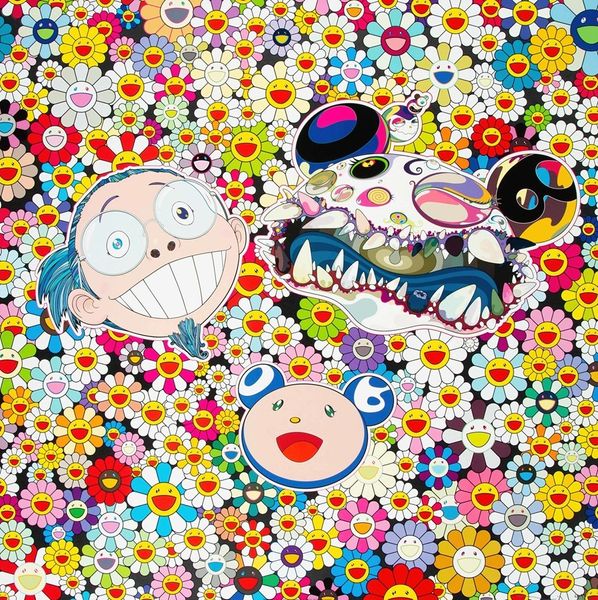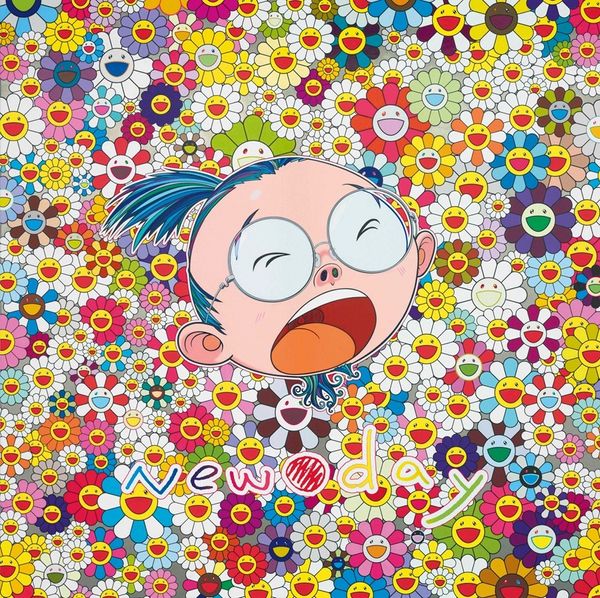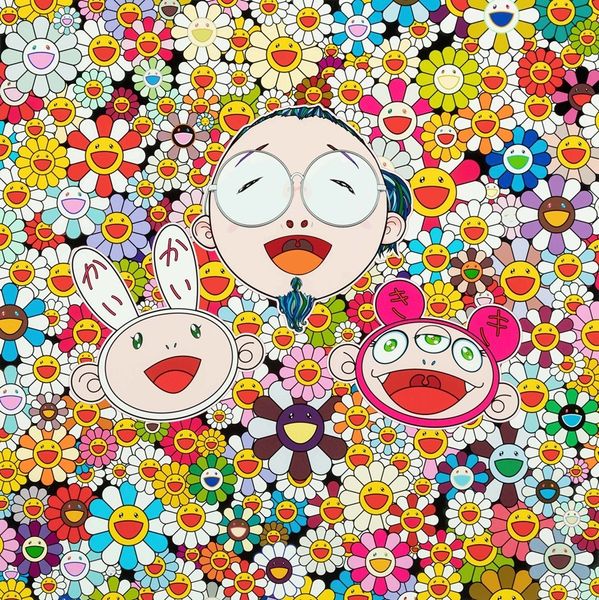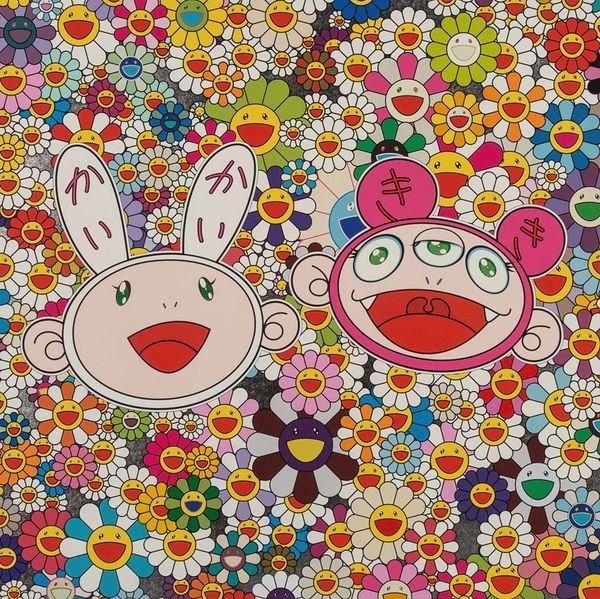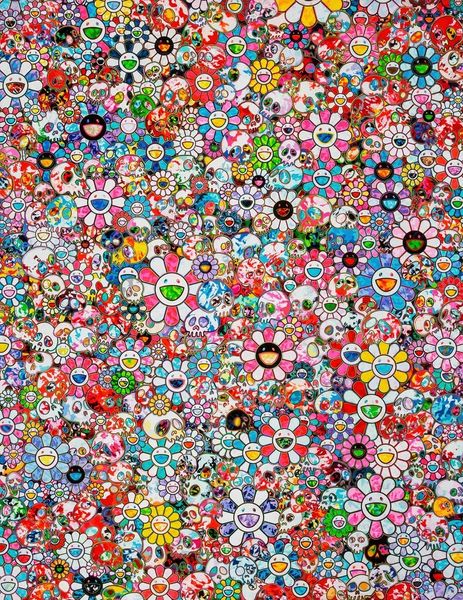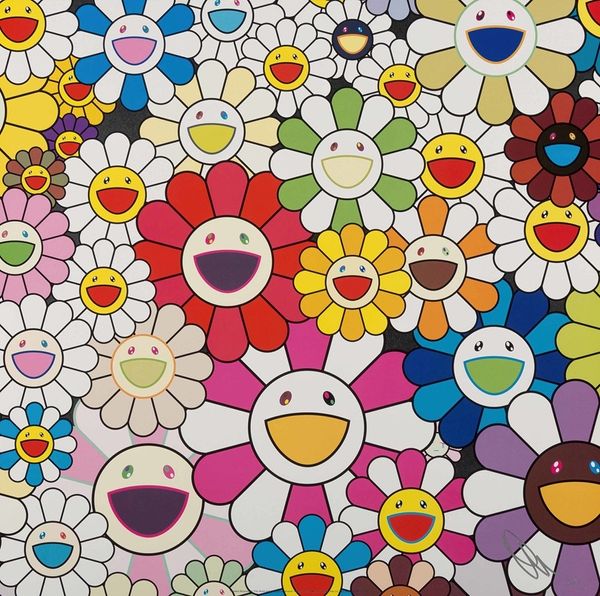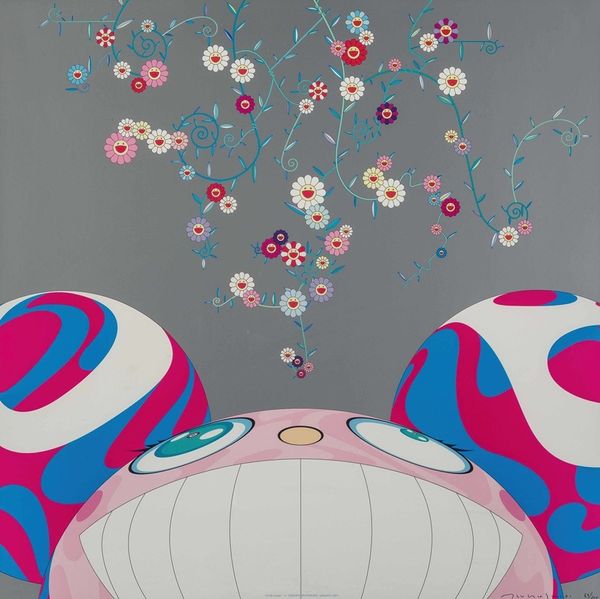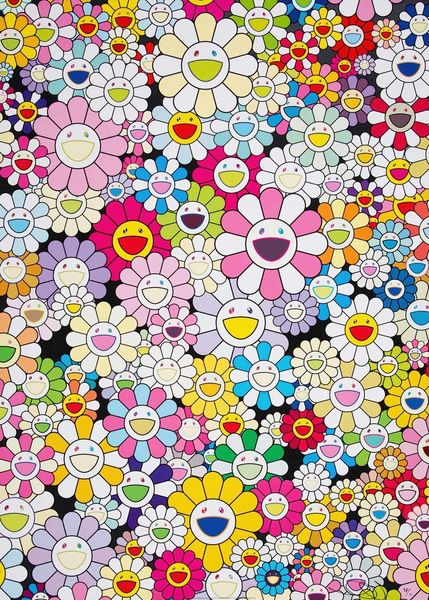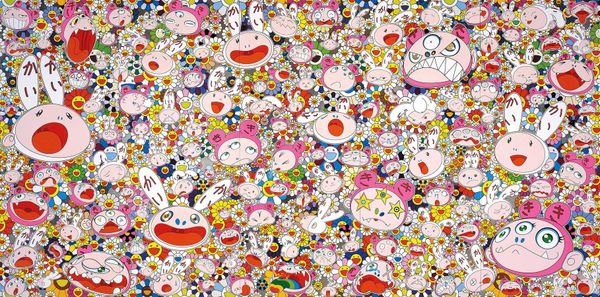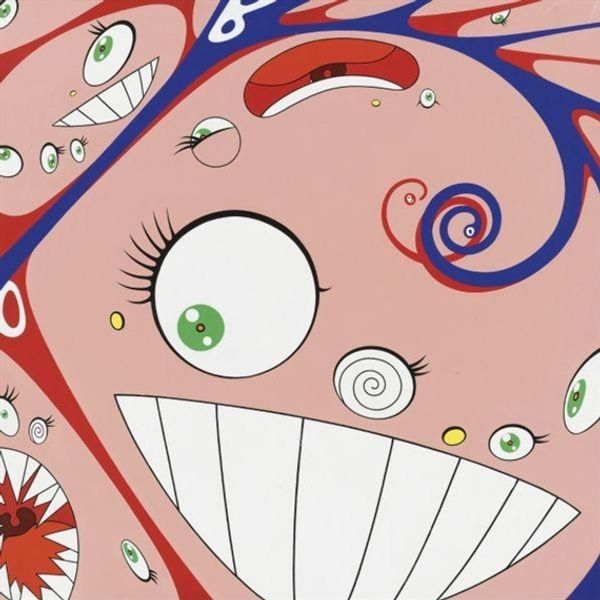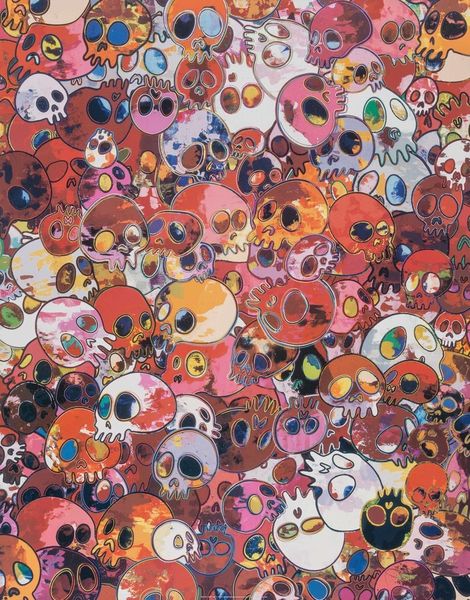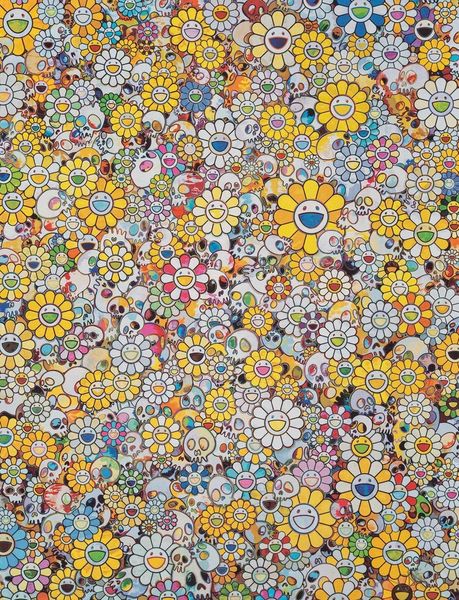
neo-pop
Copyright: Takashi Murakami,Fair Use
Curator: Takashi Murakami's 2009 piece, "Me And Double - DOB," commands our attention with its sheer exuberance and color. What are your immediate thoughts? Editor: Overwhelming, yet calculated. The saturation and relentless repetition evoke a sense of artificial joy, almost manic. It feels very digitally native, even though it's acrylic on canvas. Curator: It's fascinating to consider how Murakami merges the mechanical production with the handmade. Think about his studio, Hiropon Factory, a commercial enterprise that churns out these artworks. He blurs the lines between artist as craftsman and art as commodity. The labor behind this is significant. Editor: And that's interesting structurally, how he positions the flattened cartoon figures against a background composed of such regimented floral motifs. It establishes a figure-ground relationship that plays with depth and shallowness simultaneously. What’s the function of this paradoxical space? Curator: The repetitive flower patterns are not merely decorative. They reference traditional Japanese art while simultaneously commenting on the commercialization of culture. He is using high-art techniques to address pop-culture, to question what fine art even means in a modern society saturated with manga and anime. It is as though Murakami’s superflat aesthetic denies depth in both image and meaning. Editor: And this idea of flatness allows for direct semiotic engagement. The bright colors and simple shapes are immediately accessible, yet the layered references demand closer reading. There's a push and pull between immediate gratification and intellectual decoding. Curator: The sheer volume of works he produces is noteworthy. It reflects the mechanisms of mass production and consumption that he’s critiquing. He uses the methods of commodity to reflect on it. That is the core point here. Editor: I agree, viewing it from a structuralist point of view; his deployment of repeated symbols disrupts conventional aesthetic hierarchies and poses pressing issues about value creation in contemporary art. A clever mirroring, wouldn’t you agree? Curator: Absolutely. Murakami makes us confront the ways in which art is produced, consumed, and understood in a globalized world. Editor: It's quite an intense visual statement! I feel like I need to recalibrate my perception after this. Curator: Yes, the effect is almost a commentary of today’s media oversaturation. And maybe also our conversation, bringing a sharp materialist perspective to a more subjective reading of signs.
Comments
No comments
Be the first to comment and join the conversation on the ultimate creative platform.
